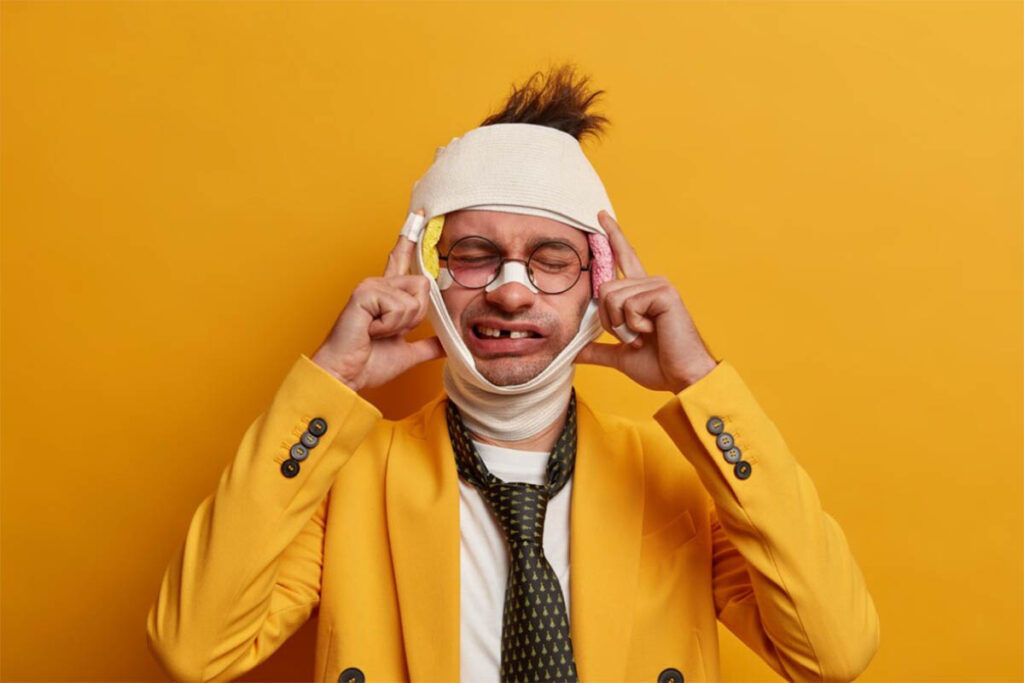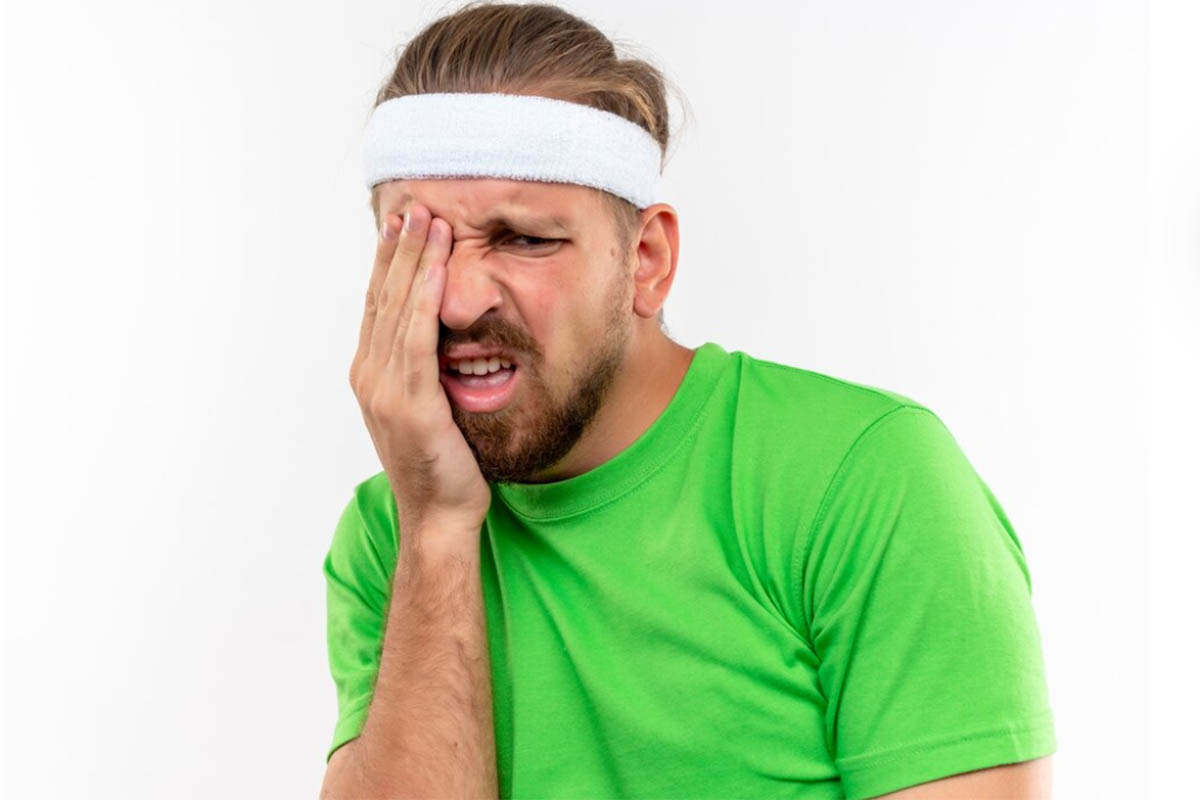Introduction
A severe concussion is a traumatic brain injury (TBI) that can have significant and long-lasting effects on an individual’s health and well-being. Whether caused by a sports-related injury, a car accident, or a fall, severe concussions demand prompt attention and proper management. In this comprehensive 2500-word article, we will explore the causes and risk factors of severe concussions, their symptoms, diagnosis, treatment options, and the process of recovery. Understanding the complexities of severe concussions is essential for recognizing and addressing these injuries promptly and effectively.
Table of Contents
- What is a Severe Concussion?
- Causes and Risk Factors
- a. Sports and Recreational Activities
- b. Motor Vehicle Accidents
- c. Falls
- d. Physical Assaults
- e. Military-related Injuries
- Symptoms of a Severe Concussion
- a. Physical Symptoms
- b. Cognitive Symptoms
- c. Emotional and Behavioral Symptoms
- d. Sleep Disturbances
- Diagnosing a Severe Concussion
- a. Medical History and Physical Examination
- b. Neurological Evaluation
- c. Imaging Tests
- d. Neurocognitive Testing
- Treatment and Management of Severe Concussions
- a. Rest and Activity Modification
- b. Medication
- c. Cognitive and Physical Rest
- d. Vestibular Rehabilitation
- e. Vision Therapy
- f. Psychological Support
- Recovery and Rehabilitation
- a. Graduated Return-to-Play Protocol (For Athletes)
- b. Return-to-Learn Protocol (For Students)
- c. Individualized Treatment Plans
- d. Monitoring Progress and Adjusting Treatment
- Preventing Severe Concussions
- a. Using Protective Gear
- b. Following Safety Guidelines
- c. Educating Athletes, Coaches, and Parents
- d. Creating Safer Environments
- Conclusion
1. What is a Severe Concussion?
A severe concussion is a form of traumatic brain injury resulting from a direct or indirect blow to the head or body, causing the brain to move rapidly inside the skull. This sudden movement can lead to chemical changes and cell damage, affecting brain function. While most concussions are considered mild, severe concussions involve more significant and long-lasting symptoms.
2. Causes and Risk Factors

a. Sports and Recreational Activities
Participating in contact sports such as football, rugby, hockey, and soccer increases the risk of severe concussions. Recreational activities like biking, skiing, and skateboarding are also common causes.
b. Motor Vehicle Accidents
Car accidents, especially those involving high-speed collisions or significant impact, can result in severe concussions due to sudden deceleration forces.
c. Falls
Falls are a leading cause of concussions, particularly among young children and older adults.
d. Physical Assaults
Violent encounters and physical assaults can lead to severe concussions as a result of direct blows to the head.
e. Military-related Injuries
Members of the military, especially those in combat zones, are at increased risk of severe concussions due to exposure to explosions and blast injuries.
3. Symptoms of a Severe Concussion
a. Physical Symptoms
- Loss of consciousness (not always present)
- Headache or pressure in the head
- Nausea or vomiting
- Dizziness or balance problems
- Sensitivity to light or noise
- Blurred vision or ringing in the ears (tinnitus)
b. Cognitive Symptoms
- Confusion or feeling disoriented
- Difficulty concentrating or remembering
- Slurred speech or difficulty finding words
- Slow response to questions or commands
c. Emotional and Behavioral Symptoms
- Irritability or mood swings
- Anxiety or depression
- Agitation or restlessness
d. Sleep Disturbances
- Difficulty falling asleep or staying asleep
- Sleeping more or less than usual
4. Diagnosing a Severe Concussion
a. Medical History and Physical Examination
A detailed medical history, including the cause of injury and any previous concussions, will be taken. The healthcare provider will conduct a thorough physical examination, including a neurological assessment.
b. Neurological Evaluation
The healthcare provider will assess the patient’s mental status, coordination, reflexes, and sensation.
c. Imaging Tests
In severe cases, imaging tests such as CT scans or MRIs may be performed to assess the brain’s structural abnormalities.
d. Neurocognitive Testing
Neurocognitive tests may be administered to evaluate cognitive function, memory, and attention span.
5. Treatment and Management of Severe Concussions

a. Rest and Activity Modification
Physical and cognitive rest is essential during the initial recovery phase. This may include limiting activities that exacerbate symptoms, such as screen time or physical exertion.
b. Medication
Pain relievers may be prescribed to manage headaches and discomfort. However, medications that thin the blood should be avoided, as they can increase the risk of bleeding in the brain.
c. Cognitive and Physical Rest
Limiting activities that require intense concentration and physical exertion can aid in the brain’s healing process.
d. Vestibular Rehabilitation
For individuals experiencing balance and dizziness issues, vestibular rehabilitation can be beneficial.
e. Vision Therapy
For those with visual disturbances, vision therapy may be recommended to address eye-tracking problems and visual processing.
f. Psychological Support
Emotional and psychological support is crucial in managing symptoms such as anxiety, depression, and irritability.
6. Recovery and Rehabilitation
a. Graduated Return-to-Play Protocol (For Athletes)
For athletes recovering from severe concussions, a graduated return-to-play protocol is implemented, gradually reintroducing physical activity and monitoring symptoms.
b. Return-to-Learn Protocol (For Students)
For students recovering from severe concussions, a return-to-learn protocol is designed to manage academic challenges and allow gradual reintegration into the classroom.
c. Individualized Treatment Plans
Each severe concussion is unique, requiring individualized treatment plans tailored to the patient’s specific needs and progress.
d. Monitoring Progress and Adjusting Treatment
Close monitoring of symptoms and progress is essential to determine the effectiveness of treatment and make necessary adjustments.
7. Preventing Severe Concussions
a. Using Protective Gear
Wearing appropriate protective gear, such as helmets and mouthguards, can significantly reduce the risk of concussions in sports and recreational activities.
b. Following Safety Guidelines
Adhering to safety guidelines and rules in sports and recreational activities can minimize the risk of severe concussions.
c. Educating Athletes, Coaches, and Parents
Educating athletes, coaches, and parents about the signs and symptoms of concussions is crucial for early recognition and appropriate management.
d. Creating Safer Environments
Ensuring that environments are designed and maintained with safety in mind can help prevent falls and accidents.
Conclusion
Severe concussions require prompt and comprehensive attention to minimize potential complications and support the healing process. Recognizing the severity of your concussion is critical while creating an appropriate plan of care.
If you or someone you know is recovering from a serious concussion, Roseburg Physical Therapy can help. A customized physical therapy program led by skilled Roseburg professionals can help overcome specific problems and speed up recovery.
Find out more about problems with the head at Sutherlin Physical Therapy. Take the first step toward a better and pain-free life by looking at what OrMobility Physical Therapy & Performance has to offer.



